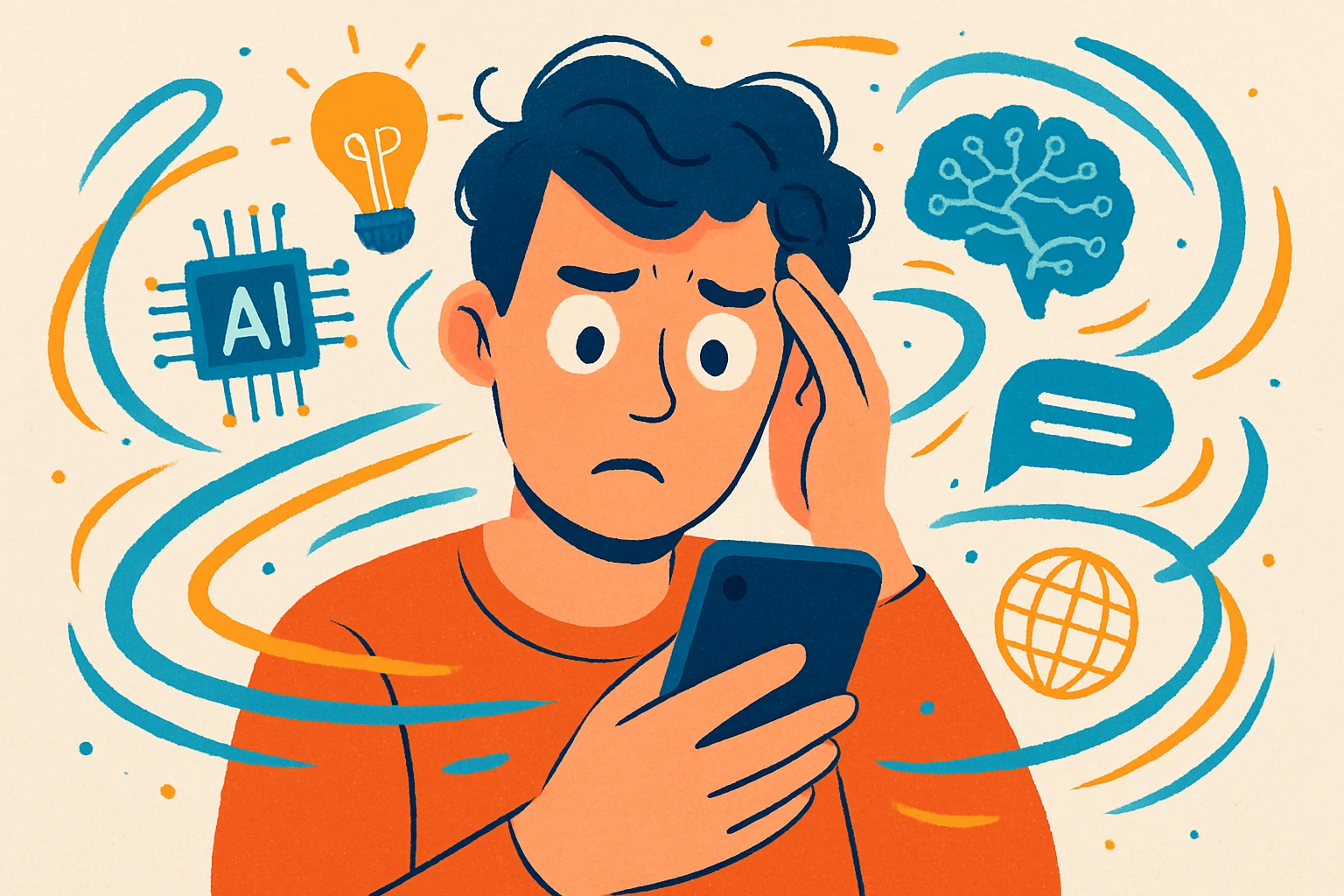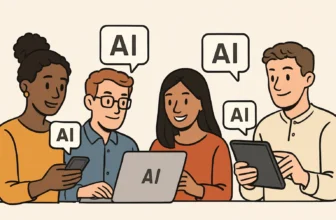
Could This AI Voice Be Mimicking You?
Ever picked up a call and thought, “Wait… was that *me* talking?” Sounds like a sci-fi glitch, right? But here’s the kicker: deepfake voice technology has gotten so good, it can now clone your voice from just a few seconds of audio. Yep, five seconds of you chatting on a podcast, making a TikTok, or even leaving a voicemail — and boom, you’ve been cloned.
Let that sink in for a second. Your voice, your most personal identifier after your face, could be wandering around the internet… without you even knowing it.
When Your Voice Stops Being Yours
So here’s the deal: AI voice cloning isn’t just fascinating — it’s a big ol’ privacy landmine. Imagine getting a frantic call from your mom saying, “You just asked me for $5,000 — are you okay?” Only, you didn’t. Someone used a deepfaked version of your voice to trick her.
I’ve seen this freaky scenario go from Reddit horror stories to real-life police reports. It’s scary because it feels so *personal*. I mean, we’re used to spam emails and sketchy URLs, but hearing someone speak in *your* exact tone and inflection? It hits differently.
How Can You Protect Your Voice?
Deep breath. The technology might be powerful, but we’re not powerless. Here’s what I recommend if you’re even slightly worried about your voice being hijacked by an algorithm:
- Watch what you share: Be mindful of voice memos, podcast snippets, or videos you post publicly. The less raw audio out there, the better.
- Scrub your data footprint: Use privacy tools like JustDelete.me or opt-out resources to remove recordings or bios from data broker sites.
- Set a voice-safe password (seriously!): Agree on a family “voice password” — maybe a random phrase only you’d know to verify identity over calls. It sounds silly, but it works.
Quick fun fact that’s also kinda chilling: Researchers found that AI could clone 95% of someone’s vocal identity with just 3 seconds of audio. Three seconds! That’s literally less time than it takes to say, “Hi, it’s me.”
What Can We Do Moving Forward?
Here’s the thing: we can’t slow the tide of technology — but we can learn to surf it smarter. We’re heading into an era where privacy isn’t just about passwords and webcams — it’s about your voice, your face, your *digital identity*.
And honestly? I think we’ve got this. Conversations like this one — where we actually hit pause and ask, “Wait, how do I protect myself?” — are the key to staying ahead.
So, the next time Siri, Alexa, or some suspicious “you” gives you a call… at least you’ll know what’s up. And you’ll be ready.
Let’s keep our tech smart, but our boundaries smarter. Deal?
The Rise of AI Cloning: Voices at Risk
Did you know that with just a 30-second clip of your voice, AI can now create a nearly perfect digital twin that sounds *exactly* like you? Yep—30 seconds. That’s all it takes to clone your voice and, well, potentially turn it against you.
Now, imagine getting a call from your mom, asking for emergency money, her voice shaking with panic. But…it’s not her. It’s a deepfake. I’ve had friends who’ve received these kinds of calls—voice scams where the cloned voice of a loved one was used to manipulate them. It’s downright chilling.
So, how does all this even work?
Thanks to powerful AI models trained on massive voice datasets, we’ve reached a point where machines can replicate not just what we say—but *how* we say it. The humor in your tone, the pause before your punchline, your regional accent? AI can mimic it all. If someone grabs a few voicemail messages, YouTube videos, or Instagram stories of you chatting—they’ve got enough to build a convincing voice clone.
The big issue here isn’t just technology—it’s consent and identification. These deepfake tools don’t exactly ask for permission. And once your voice is out there, distinguishing between “real you” and “AI you” can get… messy. Someone could use your voice to open a bank account, make fake phone calls, or trick your family. Scary stuff, right?
Okay, so what can we actually *do* about it?
Good news: there *are* ways to protect your voice and your digital identity. Here’s what I’ve started doing, and what you can try too:
- Keep your voice data limited. Be mindful of where you share voice notes or audio messages. Public platforms = higher risk. If you’re big on podcasts or social media, consider hiding or masking your raw voice in sensitive posts.
- Use watermarked voice tech. Some smart companies are adding unique voice watermarks—subtle cues that help AI systems flag if a voice is synthetic. If you’re recording professionally, ask for these protections.
- Stay informed (and just a little skeptical). If a call or message sounds fishy, question it. Ask a follow-up question only the real person would know—or switch to video for verification. Trust, but verify.
One friend of mine, a podcaster, actually started adding a unique phrase at the beginning of all her episodes—like a verbal “signature.” And if her family or friends ever hear her voice used in a strange context, they’ll know how to verify it’s really her.
The bottom line?
We can’t hit pause on AI innovation—but we can outsmart it. With a mix of awareness, caution, and a dash of digital street smarts, you can stay a step ahead of the fakers. Your voice is personal. It’s powerful. And with the right moves, it can stay protected—right where it belongs: with *you*.
Deepfake’s Dark Turn: Manipulating Emotions
Did you know that deepfake voices are now so convincing, some people have had full-on heart-to-heart conversations… with bots pretending to be their loved ones?
Nope, not a sci-fi movie plot. It’s real. And kind of terrifying.
This is one of those ways tech sneaks into the emotional side of our lives when we’re least expecting it. Imagine getting a voicemail from your mom asking for help in a shaky, tear-filled voice. Your heart skips a beat. Of course, you’d call back. Do anything to help. But… what if that voice wasn’t hers at all?
When AI Messes With Our Feelings
I’ve been following voice tech for a while now (bit of a geek that way), but even I was stunned when I heard about scammers using AI-generated voices to fake kidnappings. One desperate parent even sent thousands of dollars before realizing the “daughter” crying for help on the other line was a digital mimic.
This isn’t just identity theft — it’s trust theft. Deepfake voices play on our emotions, especially in close relationships. That lilting laugh, that comforting tone — we associate these sounds with real memories, real people. And when those are hijacked? It breaks something deeper than just privacy.
We’re talking broken families, ruined friendships, ugly misunderstandings. You think your partner said something cruel during an argument (you have the audio to prove it), but… was it even them? Scary, right?
How to Protect Your Ears — and Your Heart
The good news? We’re not totally helpless. You can still keep your emotional world safe with a few smart habits:
- Verify the unexpected. If someone sounds “off” or calls out of the blue asking for something urgent — especially money or personal info — pause. Hang up and call back on a known number. Don’t reply directly to suspicious voicemails.
- Use code words. Bit old-school spy movie, but setting up a private password or phrase with your inner circle can help you confirm it’s really them in an emergency.
- Be skeptical — even with “proof.” An emotional audio message doesn’t always mean it’s authentic. If you ever receive audio that feels manipulative — guilt-trippy, overly dramatic, or just… weird — trust your gut and double-check.
I once got a late-night call from a friend who sounded upset, asking me to wire money. My heart raced. But something felt off. I texted her instead — turns out she was asleep, completely safe, and very confused. We now have a “pineapple emoji protocol” for emergencies. Hey, it works.
You’ve Got This (and So Do We)
Deepfake voice tech may be getting eerily good, but so are we. Awareness is power. The more we educate ourselves, the harder it becomes for manipulation to take hold.
Let’s not live in fear — just with wider eyes (and sharper ears). After all, emotion should be shared, not stolen. 💛
Voice Verification: Failing Security Measure?
Did you know that back in one high-profile case, scammers used an AI-generated voice to mimic a CEO and authorize a fraudulent transfer of over $240,000? 😳 Yeah, that actually happened. Deepfake voices are starting to do more damage than just making funny TikToks—and that’s a little terrifying when you think about how many companies are turning to voice verification for security.
Let’s take a second to break this down. You’ve probably used voice verification before without even thinking twice—maybe to access your bank account, authenticate a phone call, or reset a password. It’s simple, hands-free, and feels secure, right? I mean, your voice is unique. Who else sounds exactly like you?
Well, that assumption is now being flipped on its head. Thanks to deepfake tech, your voice isn’t just yours anymore. With as little as a few seconds of audio (pulled from, say, your YouTube video or even a voice note you posted on social), AI can create a pretty darn convincing version of you. Combine that with a little social engineering, and suddenly, your digital identity becomes low-hanging fruit.
I’ve personally started thinking twice before using voice for security. A friend of mine—let’s call her Jane—had her voice cloned after giving a podcast interview. A few weeks later, her business account was targeted by an AI call claiming to be her and requesting access changes. Luckily, her team was sharp enough to spot something was off. But it was close. Too close.
So, what’s the solution? Here’s how to stay a step ahead:
- Don’t rely solely on voice authentication. If a platform is using just your voice to verify your identity, ask for multi-factor support. Layer it up—think text codes, app authentication, or biometrics like fingerprint or facial recognition.
- Limit public voice exposure. I know, this one sounds wild in the era of podcasts and social media, but be mindful. If you’re constantly recording voice notes, videos, or audio messages that are public, you might be giving the AI crowd more training data than you realize.
- Educate your team and loved ones. Not everyone’s tuned into the risks of deepfakes. If you’re running a business—or even just keeping your parents safe—make sure people know not to trust voice alone as proof of identity.
Look, this isn’t about fear—it’s about being smart. Tech always races ahead, but so can we. Deepfake voices are the new frontier in scams, yes, but we’ve got the tools and know-how to fight back. By staying alert and adapting our security habits, we can build a digital world where our voices remain ours—and ours alone.
So next time you’re about to say “My voice is my password”… maybe ask yourself: who else out there might be saying it too—with your voice.
Consent and Control: Navigating New Laws
Did you know that in some places, it’s still totally legal for someone to use your voice to create a deepfake — *without* your permission? 😳
Wild, right? You’d think your voice would be as protected as your face or your fingerprints. But the truth is, the legal landscape around deepfake voices is still playing catch-up. And while some governments are starting to respond, we’re kind of in that awkward growing-pains stage where laws are patchy, vague, or just not enforced. Frustrating, I know.
I remember the first time I heard a deepfake of a celebrity that sounded *exactly* like them. I was floored… then immediately uneasy. Because if that kind of tech is accessible to an average internet troll, what’s stopping someone from spoofing *my* voice? Or yours? It’s not just a question of “that’s creepy” — it’s about consent and control over something deeply personal: your voice.
So where do we stand legally?
Right now, a few places are stepping up. For example, California and Texas have passed laws cracking down on unauthorized voice deepfakes — especially when used in political campaigns or to mislead. That’s a start. But globally? It’s like playing privacy roulette. Some places offer protection, others don’t even know there’s a game on.
You should have the final say over how your voice is used — period. But until laws catch up everywhere, staying informed (and a little proactive) is your best shield.
How to take back voice control — today
- 1. Know your local laws: Search your region’s policies on voice rights, biometric data, or digital impersonation. A good starting point? Type “deepfake laws in [your country]” into your favorite privacy-focused browser.
- 2. Use platforms that respect consent: If you’re using voice assistants, check their terms of service. Do they store your voice? Can they use it to train AI? Opt out where you can, and choose companies that actually respect your voice as yours.
- 3. Set up voice alerts: Google yourself every once in a while — especially using audio clips if you’re a podcaster, journalist, or creator. Tools like PimEyes or Have I Been Trained let you check if your image or data is being scraped. Not perfect for audio yet, but it’s coming.
A future where your voice means *your* choice
Here’s the hopeful bit: people are waking up. Regulators are starting to take voice privacy more seriously. Tech companies are being pressured to get their act together. And the more we understand our rights, the harder it is for them to be ignored or abused.
So even if the laws are murky right now, staying alert and demanding transparency is huge. Your voice is literally one of a kind. Let’s make sure the law — and tech — start treating it that way.
We’ve got this 💪
Taking Back Your Vocal Privacy
Did you know your voice can be cloned with just 3 seconds of audio? Yeah, let that sink in. A few seconds of you chatting on a podcast, leaving a voicemail, or even posting a TikTok — and boom, someone could create a deepfake version of you saying things you’d *never* say.
It’s kind of wild, right? I remember the first time I really understood how powerful (and scary) AI voice cloning has become. I was listening to a clip online that sounded exactly like a celebrity — emotions, inflections, all of it spot on. Turns out, it wasn’t even them. That’s when it hit me: if a stranger can recreate someone that flawlessly, none of our voices are safe anymore.
And it’s not just about being imitated. It’s about trust. Imagine someone using a fake version of your voice to scam your relatives, fool your employer, or sign you up for things you never agreed to — just by mimicking how you sound. It’s a privacy nightmare hiding under the radar.
So what can we do? We’re not helpless here. Let’s talk solutions:
- Be stingy with your voice data. Don’t just accept every “record voice” permission app asks for. Is that karaoke app really worth giving up your vocal identity?
- Scrub those old recordings. Got outdated voicemails, social audio clips, or random YouTube commentary floating around? Clean them up or make them private. The less that’s out there, the less AI has to work with.
- Use watermarking tools (yes, they’re a thing!). Some platforms now offer subtle “voice fingerprints” or digital markers to prove authenticity. Think of it like a secret signature baked into your voice.
Also — and this one’s big — speak up (pun intended) about legislation. Support policies and companies that prioritize ethical AI voice practices. The tech’s not going away, so shaping it responsibly is our best shot.
Bottom line? You have more control than you think. Sure, tech is outpacing us in some areas, but we’ve still got the power of awareness, choice, and community. Staying informed is the first shield you can throw up.
So don’t panic — just prep. Today, we’re talking about it. Tomorrow, you’re taking action. That’s how we stay one step ahead of the machines (cue dramatic music 🎬).
Your voice is uniquely yours. Let’s keep it that way.












